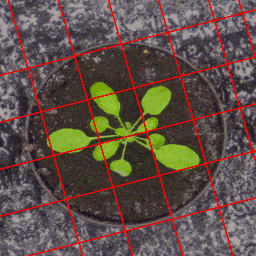 | 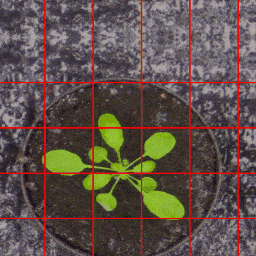 | 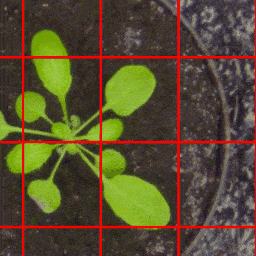 | 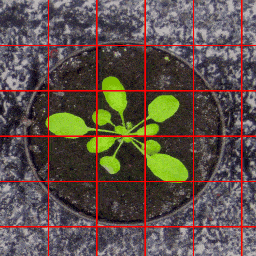 | 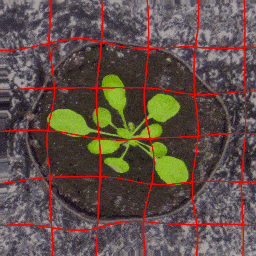 |
Installation
tfAugmentor is written in Python and can be easily installed via:
pip install tfAugmentor
Required packages:
- tensorflow (developed under tf 2.4), should work with any 2.x version
- numpy (numpy=1.20 may cause error of tf.meshgrid, use another version)
Quick Start
tfAugmentor is implemented to work seamlessly with tf.data. The tf.data.Dataset object can be directly processed by tfAugmentor.
To instantiate an Augmentor object, three arguments are required:
class Augmentor(object):
def __init__(self, signature, image=[], label_map=[]):
...
- signature: to present the structure of the dataset
- a nested tuple of string
- a list/tuple of dictionary keys, if your dataset is in a dictionary form
- image: list of string items in signature, which will be treated as normal images
- label: list of string items in signature, which will be treated as segmentation masks
Note: only the items in ‘image’ and ‘label’ will be processed, others will remain untouched
A simple example
import tfAugmentor as tfaug
# new tfAugmentor object
aug = tfaug.Augmentor(signature=('image', ('mask1', 'mask2')),
image=['image'],
label=['mask1', 'mask2'])
# add augumentation operations
aug.flip_left_right(probability=0.5)
aug.rotate90(probability=0.5)
aug.elastic_deform(strength=2, scale=20, probability=1)
# assume we have three numpy arrays
X_image = ... # shape [batch, height, width, channel]
Y_mask1 = ... # shape [batch, height, width, 1]
Y_mask2 = ... # shape [batch, height, width, 1]
# create tf.data.Dataset object
tf_dataset = tf.data.Dataset.from_tensor_slices((X_image, (Y_mask1, Y_mask2))))
# do the actual augmentation
ds1 = aug(tf_dataset)
# or you can directly pass the numpy arrays, a tf.data.Dataset object will be returned
ds2 = aug((X_image, (Y_mask1, Y_mask2))), keep_size=True)
If the data is passed as a python dictionary, the signature should be the list/tuple of keys. For example:
import tfAugmentor as tfaug
# new tfAugmentor object
aug = tfaug.Augmentor(signature=('image', 'mask1', 'mask2'),
image=['image'],
label=['mask1', 'mask2'])
# add augumentation operations
aug.flip_left_right(probability=0.5)
aug.rotate90(probability=0.5)
aug.elastic_deform(strength=2, scale=20, probability=1)
# assume we have three numpy arrays
X_image = ... # shape [batch, height, width, channel]
Y_mask1 = ... # shape [batch, height, width, 1]
Y_mask2 = ... # shape [batch, height, width, 1]
ds_dict = {'image': X_image,
'mask1': Y_mask1,
'mask2': Y_mask2}
# create tf.data.Dataset object
tf_dataset = tf.data.Dataset.from_tensor_slices(ds_dict)
# do the actual augmentation
ds1 = aug(tf_dataset)
# or directly pass the data
ds2 = aug(ds_dict)
Note: All added operations will be executed one by one, but you can create multiply tfAugmentor to realize parallel pipelines
A more complicated example
import tfAugmentor as tfaug
# since 'class' is neither in 'image' nor in 'label', it will not be processed
aug1 = tfaug.Augmentor((('image_rgb', 'image_depth'), ('semantic_mask', 'class')),
image=['image_rgb', 'image_depth'],
label=['semantic_mask'])
aug2 = tfaug.Augmentor((('image_rgb', 'image_depth'), ('semantic_mask', 'class')),
image=['image_rgb', 'image_depth'],
label=['semantic_mask'])
# add different augumentation operations to aug1 and aug2
aug1.flip_left_right(probability=0.5)
aug1.random_crop_resize(sacle_range=(0.7, 0.9), probability=0.5)
aug2.elastic_deform(strength=2, scale=20, probability=1)
# assume we have the 1000 data samples
X_rgb = ... # shape [1000 x 512 x 512 x 3]
X_depth = ... # shape [1000 x 512 x 512 x 1]
Y_semantic_mask = ... # shape [1000 x 512 x 512 x 1]
Y_class = ... # shape [1000 x 1]
# create tf.data.Dataset object
ds_origin = tf.data.Dataset.from_tensor_slices(((X_rgb, X_depth), (Y_semantic_mask, Y_class))))
# do the actual augmentation
ds1 = aug1(ds_origin)
ds2 = aug2(ds_origin)
# combine them
ds = ds_origin.concatenate(ds1)
ds = ds.concatenate(ds1)
Main Features
The argument ‘probability’ controls the possibility of a certain augmentation taking place.
Mirroring
# flip the image left right
aug.flip_left_right(probability=1)
# flip the image up down
aug.flip_up_down(probability=1)
Rotation
# rotate by 90 degree clockwise
a.rotate90(probability=1)
# rotate by 180 degree clockwise
a.rotate180(probability=1)
# rotate by 270 degree clockwise
a.rotate270(probability=1)
# rotate by a certrain degree, Args: angle - scala, in degree
a.rotate(angle, probability=1)
# randomly rotate the image
a.random_rotate(probability=1)
Translation
# tranlate image, Args: offset - [x, y]
a.translate(offset, probability=1):
# randoms translate image
a.random_translate(translation_range=[-100, 100], probability=1):
Crop and Resize
# randomly crop a sub-image and resize to the original image size
a.random_crop(scale_range=([0.5, 0.8], preserve_aspect_ratio=False, probability=1)
Elastic Deformation
# performa elastic deformation
a.elastic_deform(scale=10, strength=200, probability=1)
Photometric Adjustment
# adjust image contrast randomly
a.random_contrast(contrast_range=[0.6, 1.4], probability=1)
# perform gamma correction with random gamma values
a.random_gamma(gamma_range=[0.5, 1.5], probability=1)
Noise
# blur the image with gaussian kernel
a.gaussian_blur(sigma=2, probability=1)
Caution
- If .batch() of tf.data.Dataset is used before augmentation, please set drop_remainder=True. Oherwise, the batch_size will be set to None. The augmention of tfAgmentor requires the batch_size dimension